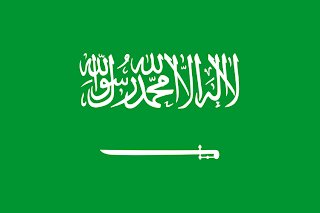By Luke Pachymuthu and Jennifer Tan - Analysis SINGAPORE July 27 (
bdnews24. com/Reuters) - Saudi Arabia, the world's top oil exporter,
is burning more crude in domestic power plants to keep new wells
pumping and produce cleaner electricity, likely eliminating demand for
imported fuel this summer. The use of even more crude oil to generate
electricity allows the kingdom to put to use fresh output from a major
new oilfield while holding firm to its OPEC commitment to curb
exports. It also helps the kingdom meet stricter environmental rules.
Estimates on how much crude it is burning differ, but the kingdom's
own data show it has risen in recent years, and it could be as high as
470 ,000 bpd of crude this year, up 62 percent from 2008 , consultancy
FACTS Global Energy says. A Saudi source familiar with the kingdom's
energy sector said the maximum it could burn at power stations would
be 300 ,000 bpd, although another 120 ,000 bpd could be burned to
power refineries and other facilities related to upstream production.
While the rise would have little impact on global crude oil markets
more focused on Saudi exports -- which Riyadh has kept in check to
help drain swollen global stockpiles -- the substitution will likely
curtail its traditional summer fuel oil buying binge. "They won't be
importing fuel oil this summer because they are going to be burning
more crude," a Middle East trade source familiar with Saudi Arabia's
fuel oil import program said. Burning crude instead of fuel oil is
less of a loss to Saudi Arabia now than it has been historically, as
fuel oil prices have strengthened. Fuel oil now trades at a discount
of $5 to benchmark crude, about half the discount on average in 2008.
FACTS estimates that during peak summer power demand, crude burned
could rise as high as 500 ,000 to 600 ,000 bpd. Less is used in winter
when power demand is weaker. "In early 2009 , a significant fraction
of the fuel oil used in the power sector was replaced by crude, partly
due to tighter regulations on the quality and metals content of fuel
oil burned in power stations," said Vijay Mukherji, a FACTS senior
analyst. Saudi data from 2008 seem to support the thesis: Saudi Aramco
produced 8.96 million bpd of crude oil last year, exporting 6.88
million bpd and refining 1.58 million bpd, its annual report showed.
That left 500 ,000 bpd unaccounted for, crude likely to have been used
by power plants, energy facilities or put into inventories -- nearly
140 ,000 bpd more than the year before. Some 50 ,000 bpd of that went
into domestic inventories, according to Saudi data submitted to the
international JODI database. All told, it suggests the kingdom kept
nearly 100 ,000 bpd more crude domestically that it did not refine or
add to stocks in 2008 than in 2007 , according to Reuters
calculations. The kingdom burns a total of 800 ,000 bpd of crude and
oil products to generate power, a Saudi Electricity Co (SEC) official
said, but he was unable to say how much was crude or fuel oil. FACTS
estimates the kingdom used up to 240 , 000 bpd of fuel oil for power
generation last year. CLEANER POWER? Saudi Arabia typically imports
some 38 ,000 bpd of low-sulphur fuel oil from the Mediterranean and
Europe in summer to meet peak power demand as the desert heat stokes
air- conditioning use. The imports top up domestic refinery output.
The shift to burning more crude -- thought to be mostly Arab Light
that has about one-fifth as much metals content as fuel oil -- to
produce electricity is partly due to more stringent environmental
requirements of domestic utilities. "The power stations are getting
tougher on fuel standards... there is now a requirement for lower
metals in the fuel being used," a senior oil trader said. "So they are
now having to burn more light crude, which has lower metals content."
The SEC official said a committee on clean development headed by oil
minister Ali al-Naimi was set up some weeks ago to help implement
tighter rules to cut pollution and carbon emissions to internationally
acceptable levels. He said two years ago, banks signed international
pacts that prohibit them from funding projects which are not
environmentally friendly, adding that the SEC had spent 1 billion
riyals ($266.6 million) cleaning up their Rabigh and Shuaiba plants.
Arab Light has a vanadium content of about 19.7 parts per million,
less than a fifth of the level contained in fuel oil it imports for
power stations. Vanadium is a typical industry indicator for measuring
metals content in fuel. NEW KHURAIS OILFIELD Saudi Arabia has cut
crude output in 2009 to the lowest in six years as part of OPEC
pledges to remove 5 percent off global supply to match recessionary
demand. Estimated output in June of 8.02 million bpd was down from
9.54 mln bpd in August 2008. The cuts come even as the kingdom starts
output from huge new oilfields. Last month, it brought online the
giant Khurais field, which pumps Arab Light. Aramco is slowly cranking
up output at the 1.2 million-bpd facility, the largest-ever single
increase to global supply. The kingdom has the largest spare capacity
cushion it has held for years, so it can burn more crude at home with
no impact on its supplies to international markets.
skip to main |
skip to sidebar
LATEST BUSINESS, FINANCE, BANKING ECONOMIC NEWS
Subscribe
Powered By
Skin Design:
Free Blogger Skins

